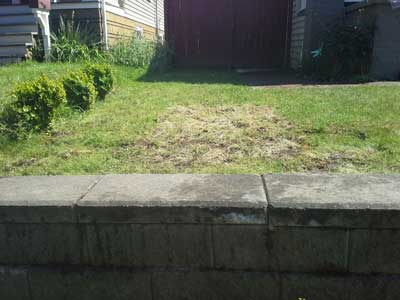Sewer Risks for Older Seattle Buildings

Seattle Public Utilities says no to “flushable” wipes
Seattle Public Utilities General Manager Mami Hara advises on Seattle.gov that all types of wipes including “baby, surface, disinfecting, cleaning, flushable” should go in the garbage and not down your toilet.
Hara writes, “They can clog sewer pipes.” The Seattle Public Utility also says not to put these wipes in with recycling, yard waste or food waste.
Across the country in Pittsburgh, one borough has replaced two of its giant water station pumps because they’ve been burned out by “flushable” wipes that did tens of thousand dollars’ worth of damage.
That’s money down the drain, quite literally, but it’s even worse when that cash is coming out of your wallet because your sewer pipes are the ones clogged.
No wipe is “flushable”
Don’t believe the ads you see on TV or what’s written on the package of any wipe that advertises itself as flushable. No wipe should be flushed down the commode.
These wipes do not biodegrade and can fester for a year or more wedged into your sewer pipes trapping other flushed matter as well. “Flushable” doesn’t mean biodegradable so beware.
Cottonelle, Charmin, Scott and Equate (Walmart’s private label brand) all manufacture and promote wipes they say are “flushable” but Consumer Reports put these to the test.
Consumer Reports took standard toilet paper and swirled it in water to show how TP easily breaks up. By comparison, 10 minutes of swirling a flushable wipe didn’t make a dent.
Don’t wreck your sewer by flushing what you should not
In addition to “flushable” wipes, other items to keep out of your toilet that you might be tempted to flush include:
-
Dental floss
-
Paper towels
-
Feminine hygiene products (pads, tampons, etc.)
-
Cotton balls and cotton swabs
-
Cigarette
Seattle Businesses in Older Buildings at Risk for Massive Sewer Repair Bills
Seattle is almost 164 years old and so is much of the infrastructure our city rests upon – including the sewers, pipes, and plumbing works. If you own a business in an older building, you should be prepared for an inevitable and costly repair to your pipes unless your sewer system has previously been rebuilt to replace the aging materials.
$35k sewer disaster in Capitol Hill
One business in Capitol Hill, Nacho Borracho, found themselves the victim of a sewer disaster thanks to roots from a tree that invaded and obstructed their pipe. The total bill was $35,000 for the extensive repair which involved tearing up the sidewalk to replace the pipe. Thankfully, the bar didn’t have to foot the bill – the building owner did.
However, if you own the building where your business is located, you might find yourself writing a five-digit check for sewer repairs. As Seattle’s vintage buildings get older, the pipes attached to them do too and sewers and side sewer lines can crumble, crack, or become blocked. This can result in sewer outflow onto the streets or a backup inside your business.
A little sewer problem can become a crisis
If you notice signs of a sewer issue and ignore it, that can lead to bigger problems and a costlier repair. Ignoring a plumbing problem is never wise. Since sewer lines carry waste out of your business, a clog or leak means that waste can back up inside which can be smelly, pose a health hazard, and can see customers and employees running for the door.
Here are a few signs of sewer line problems you should never ignore:
-
Unexplained gurgling sounds from any drain
-
Water backing up in sink drains
-
Water backing up in the toilet
-
Noise from one drain when you’re using another
-
More than one drain clogging at the same time
-
Persistent bubbles when water goes down the drain
-
Toilets won’t flush properly and plunging doesn’t solve it
Sewers vs side sewers
It’s important to know where the sewer problems lie. Sewers are main lines near or under the streets and are public lines. If something goes wrong on a sewer main, the city must foot the bill for the repairs. A sewer main problem still might inconvenience your business if the water is cut off and the sewer lines are shut down for any length of time.
Side sewers run from the main public sewer lines up to homes and buildings. If the problem is in a side sewer, the repair is the responsibility of the property owner. If you rent your property, you might think you’re safe from the cost of a big sewer repair, but that’s not always true. The fine print of your rental contract might require you to chip in towards certain expenses.

The benefits of trenchless repair
Digging a trench to make a sewer repair can double or triple the cost of a side sewer repair job.
When you choose a company like Complete Trenchless to take care of your business’ sewer problem, this cost can often be avoided.
We specialize in horizontal drilling and trenchless repair. That means we don’t have to dig up a sidewalk or driveway to fix the sewer.

These repairs are faster, more affordable, less disruptive to your business, and require far less reconstructive work on grass, sidewalks, or driveway surfaces. Traditional sewer repair can tear up entrances, sidewalks, and parking areas and obstruct your business for days. Choose a trenchless repair company for a more cost-effective and faster solution.
If you suspect your business has a side sewer problem, contact Complete Trenchless. You can reach us in Seattle at (206) 259 0415. We’re family owned, have decades of experience and are ready to help you get back to business today. Call us now.









